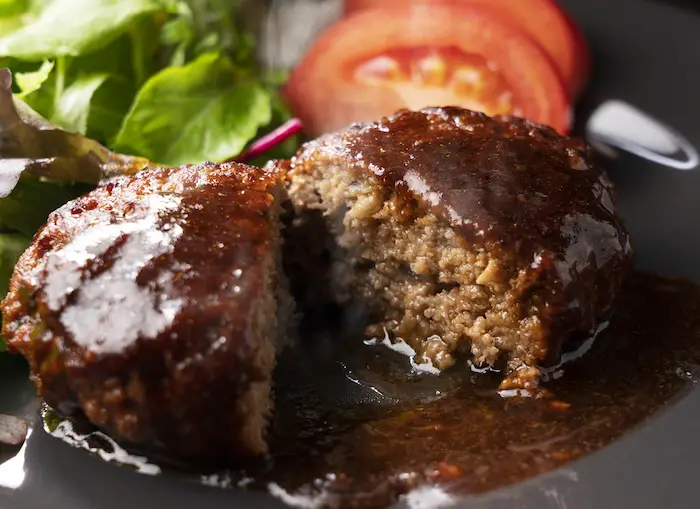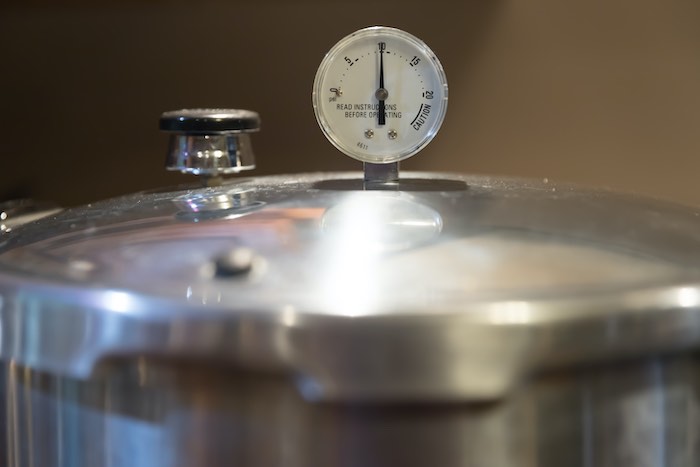The French are notorious for their culinary alchemy. They have developed many tasty tidbits and morsels that are centuries old. In fact, one of the main French specialties is developing extravagant and labor-intensive sauces, broths and consumes. The demi-glace is one sauce used worldwide and serves as a base for soups, sauces and other meat-based dishes.
Ideally, demi-glace should taste like a meaty sauce with hints of salt, herbs, wine and tomato. The meat bones of whichever animal it comes from it will be at the forefront of the flavor. Traditionally, this is veal. But, it can also be beef, chicken, pork, fish or even vegetables.
If you’re old enough to know who Julia Child is, surely you’ve seen her make this or you’ve seen the Saturday Night Live skit with Dan Aykroyd. Regardless, you don’t need to be a chef, versed in French cuisine or know who Julia Child is to appreciate the delicate yet bold taste of a demi-glace.
Demi-Glace in French
Demi-glace, pronounced as “deh-mee glahss,” is a thick, sticky-ish and jelly-like brown sauce that has a rich, meaty flavor. “Glace” is the word for glaze or icing whereas “demi” refers to half. Therefore, demi-glace translates to half glaze in English.
Demi-glace traditionally comes from veal, which is a gamier tasting meat similar to beef. But, veal tends to be expensive, so people will use vegetables, chicken, fish and beef.
But, the French will add that to the word to indicate a change from the traditional recipe. Therefore, “demi-glace au poulet” is chicken half glaze and “demi-glace au bœuf” is beef half glaze. Using the word alone suggests the traditional veal version.
The Basic Demi-Glace

Demi-glace combines one of the great mother sauces, Espagnole, with meat stock. Espagnole basically contains meat stock, tomato paste and water. It then gets reduced by half for up to three days on very low heat. Then, to remove impurities, it undergoes straining. Finally, sherry blends into the sauce to deglaze the delicate reduction until well warmed.
Some chefs will include things like garlic, shallots, rosemary, basil, thyme, celery, carrots, onion and other similar ingredients during the careful reduction time. Therefore, demi-glace is not the same as straight meat stock, bone broth, au jus or gravy. This sauce sits in its own class.
The resulting product has a meaty taste with hints of salt and wine along with any other vegetables or herbs used. It’s quite bland actually, but not in an off-putting or unpalatable way. It’s not salty but there are hints of salt in it due to the development of salts from the beef stock and bones cooking down for such an exorbitant period of time.
What Foods to Eat with Demi-Glace
The rich, almost sticky texture of demi-glace is a great base for soups, stews and chowders. It adds a zing of meaty flavor to rice, risotto and casseroles. Sometimes, it’s simply warm and used like a gravy over cutlets of veal, lamb, beef, chicken, fish and etc.
While it isn’t a gravy in and of itself, you can use it as part of a gravy recipe. The idea is that you can enrich and boost a dish’s flavor with it. The possibilities are near endless.
Conclusion
Demi-glace is a wonderful French concoction that carefully reduces bone stock with other delectable ingredients such as tomato paste, water, herbs and vegetables. This can comprise chicken, beef, fish or just veggies, but it’s traditionally made from veal. Regardless, it’s a delicious base for a host of dishes that include soups and stews, among many others.
See Also:
How To Cook Bacon Without Smoke? (2 Ways)
Is Greek Yogurt Chunky?
Is Defrosting Meat In The Sun Bad?
Do You Still Season Meat After Marinating?
Does Pancetta Smell Bad? Read This First!


